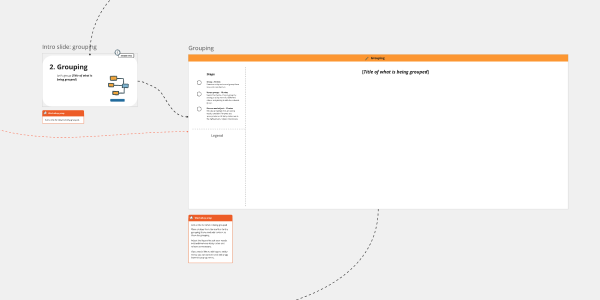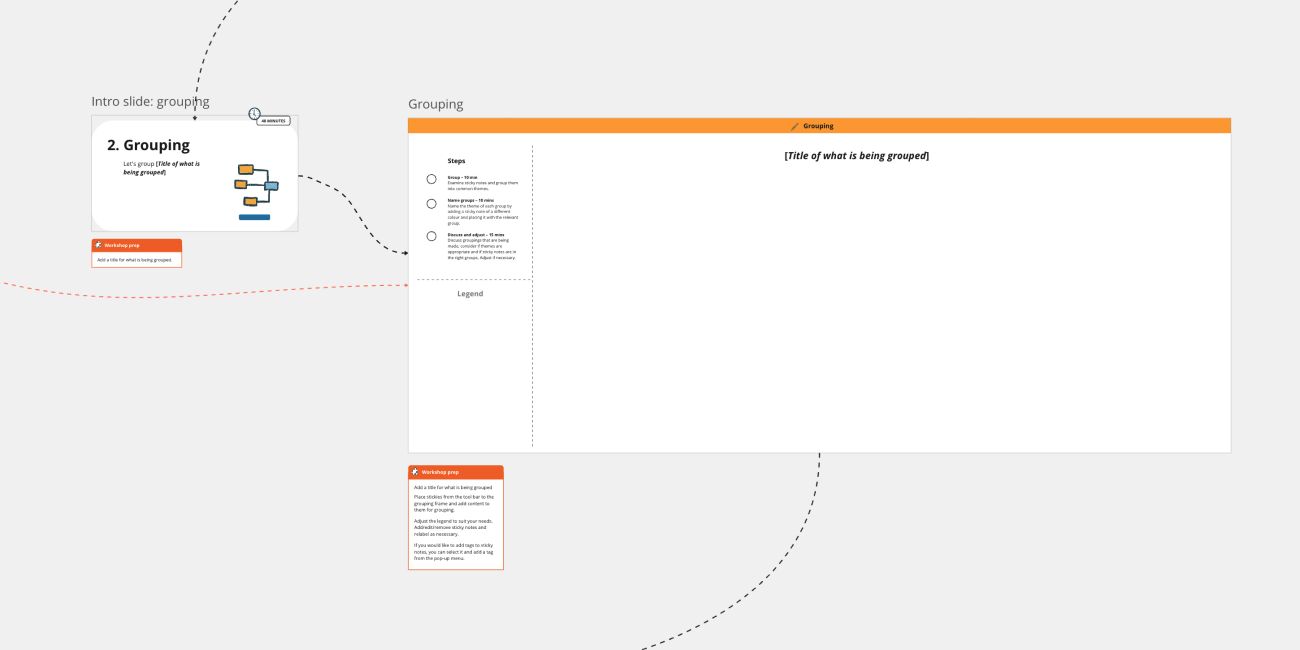Grouping
Grouping (also known as 'theme-ing', ‘clustering’ or 'affinity diagramming') is the practice of bringing related content together. It is used to organise elements such as ideas and research findings into related groups. Using grouping to categorise group data can help with identifying themes (rather than addressing each data point individually) which enables participants to address patterns found within the data.
This activity can be conducted online using virtual tools such as Miro or Microsoft Whiteboard, or in person with physical sticky notes on a wall or whiteboard.
As a data synthesis tool, grouping is often used towards the end of another process, such as a brainstorming session. This play can be added to many other activities in this playbook.
It can be used to help:
- analyse collected data
- form connections, discover insights and identify themes within groups of data
- recognise how prevalent particular issues are within the data you’ve collected

Outcomes
- Organisation of design data into more easily manageable groups
- Identification of themes within data
- Enabling better decision-making by narrowing down options
- Fostering unity through collaboration
- Creation of better and shared understanding of the situation as a whole
- Recognition of patterns which can inform direction
The stages

The four stages of the Service design and delivery process are Discovery, Alpha, Beta, and Live.
Digital service standard
This play helps your service meet the following criteria of the digital service standard.
Share your feedback
Take our short feedback survey and tell us what you thought of this play, or report an issue.
This playbook is a beta product, your feedback helps us improve it for everyone.
Contact us
If you need advice, mentoring, or guidance on how to use the playbook, or you’d like to contribute to the playbook, you can contact us.
